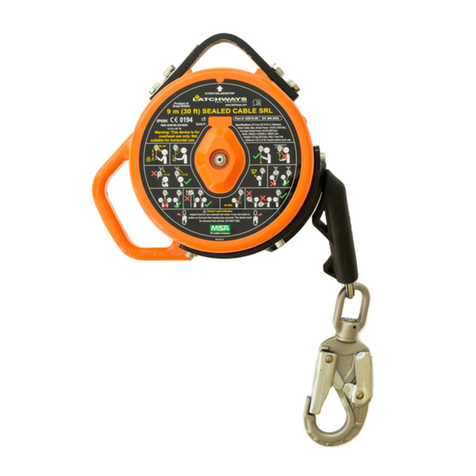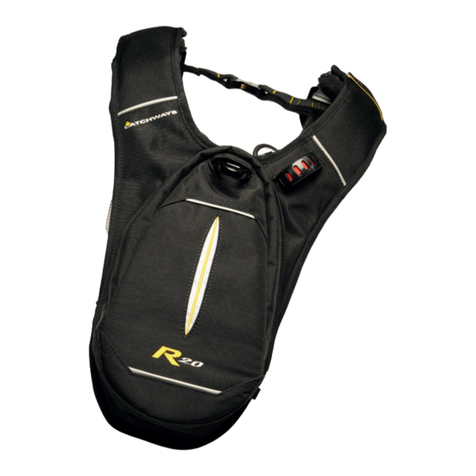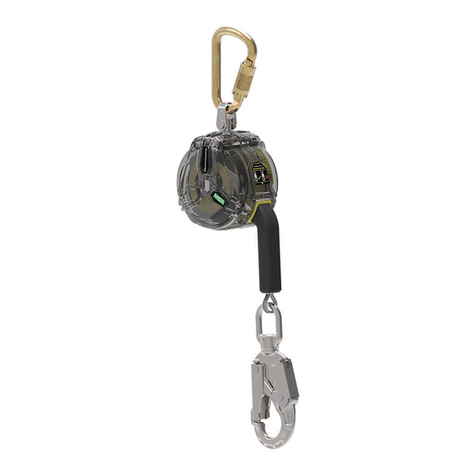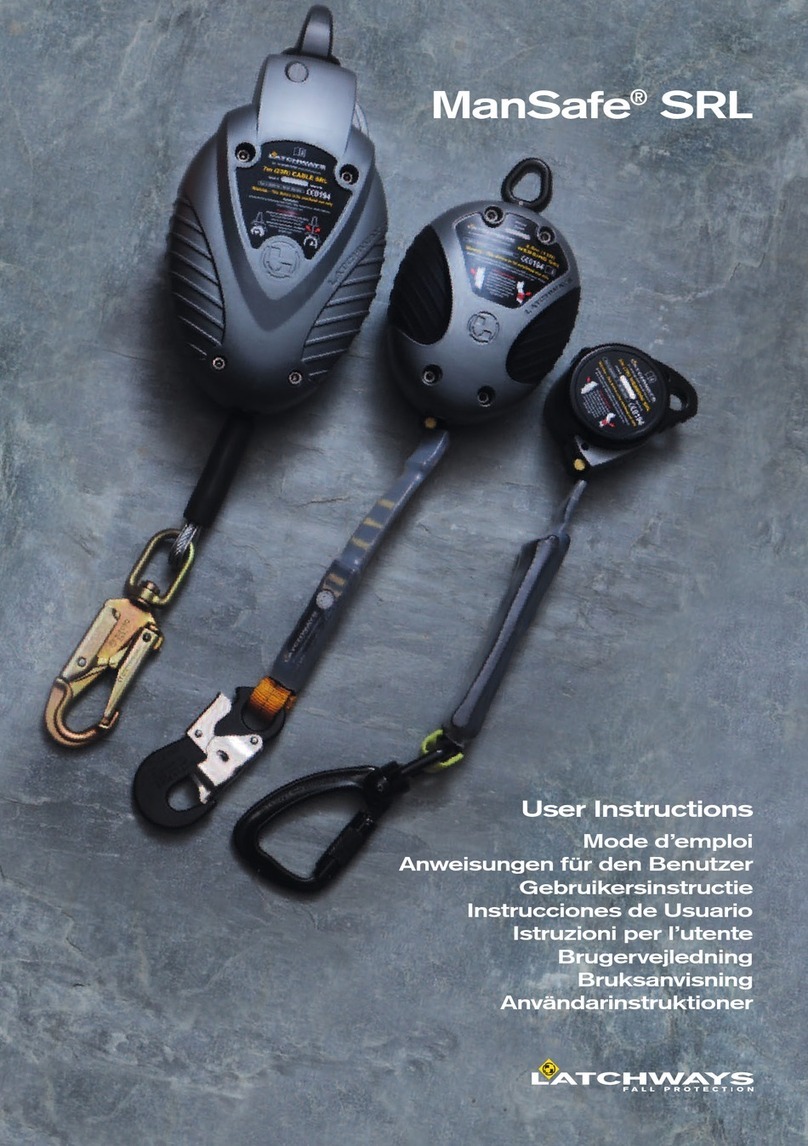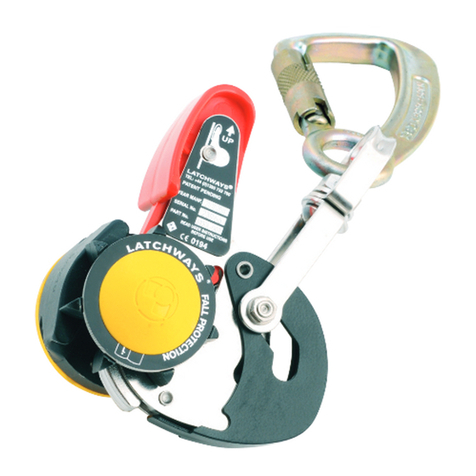
10
Release pin:
pin within the descent device that releases to initiate a descent.
Backpack:
textile bag attached to the harness containing the descender device.
Anchor:
fall arrest anchor device with a minimum capacity of 10 kN.
3 Purpose
The PRD comprises a full body harness conforming to EN 361:2002 with integral descender device
conforming to EN 341:2011 Type 1 Class D – For one descent only. The PRD is intended to be used in a
fall arrest system and, in the event of a fall, the descent device can be activated by the user to lower the user
safely to a lower level. Once activated, the descent speed is automatically limited and requires no further input
from the user. The PRD should be a personal issue item.
4 Limitations
The PRD shall not be used outside its limitations or for any purpose other than that for which it is intended.
All inspections should be conducted by a competent person. Do not attempt to modify or repair the equipment.
It is critical for your safety that these instructions are followed and the equipment is not misused.
1 Total user weight (including tools) 59 kg min – 140 kg max (130 lbs min 310 lbs max).
2 The PRD is for a single user, for rescue purposes only.
3 Only one person can be connected to the PRD at any time.
4 Use of this equipment in hazardous environments may require additional precautions to reduce the
possibility of injury to the user or damage to the equipment. Hazards may include, but are not limited
to: high heat, fires, acids, caustic solutions, welding flames, explosive or toxic gases, corrosive
environments, sharp edges, moving machinery.
5 Operating temperature -20°C to +60°C (-4°F to +140°F).
UK
Personal Rescue Device
User Instruction Manual
Descender model number R20 (68200-00)
Maximum descent height 20 m / 65 ft
Descent energy 34,300 J / 25,300 ft/lbF
Descent line type 5.4 mm diameter Ultra-High Molecular Weight Polyethylene
(UHMwPE) core, Aramid overbraid rope
Harness model number Description Materials
RH1-Part no: 68001-00 Single point, fall arrest harness with quick
release buckles, adjustable length shoulder
STRAPSADJUSTABLELENGTHLEGSTRAPS
Polyester webbing with
powder coated aluminium
fittings.
RH2-Part no: 68002-00 Two point, fall arrest harness with quick
release buckles, adjustable length shoulder
STRAPSADJUSTABLELENGTHLEGSTRAPS
(See Figure 17 and Section 7.2).
Polyester webbing with
powder coated aluminium
fittings and steel chest
D-Ring.
RH3-Part no: 68003-00 Four point, fall arrest harness with quick
RELEASEBUCKLESADJUSTABLELENGTHSHOULDER
STRAPSADJUSTABLELENGTHLEGSTRAPS
adjustable length waist belt with work
positioning attachments.
Polyester webbing with
powder coated aluminium
fittings, steel chest D-Ring
and steel side D-Rings.
